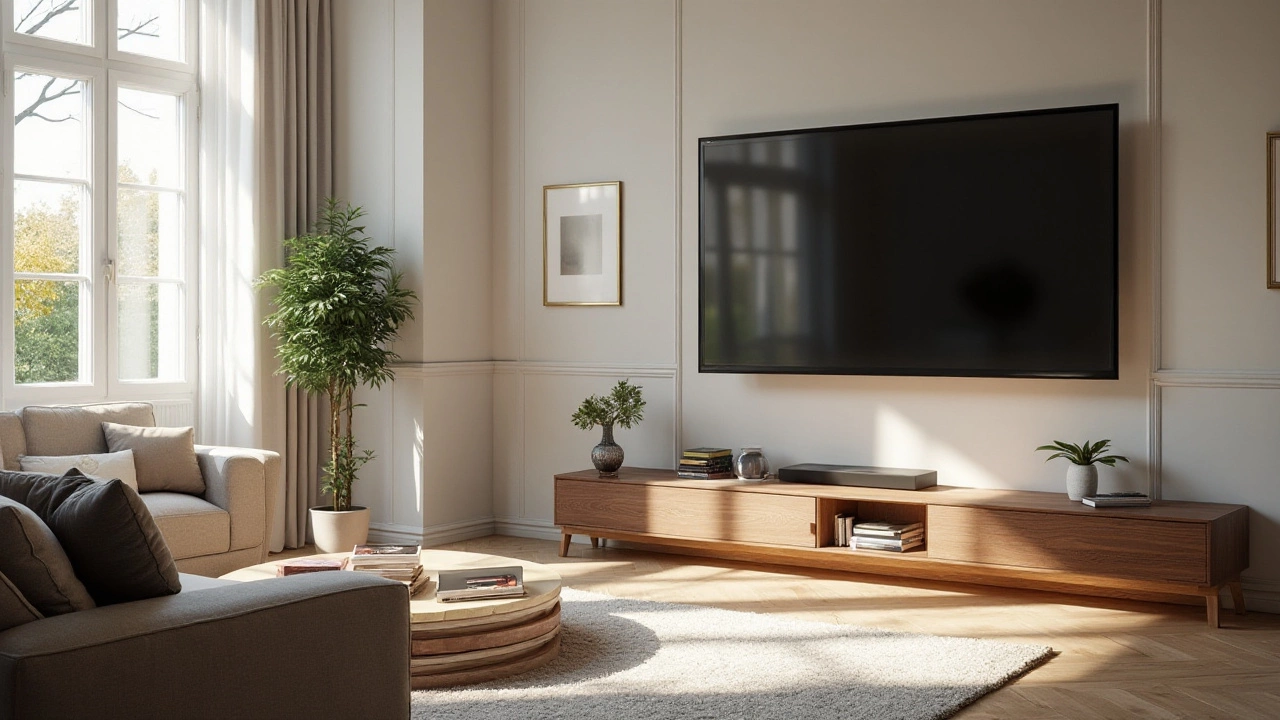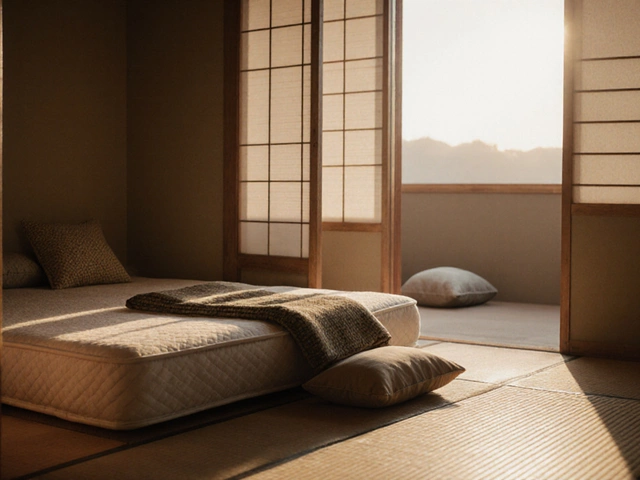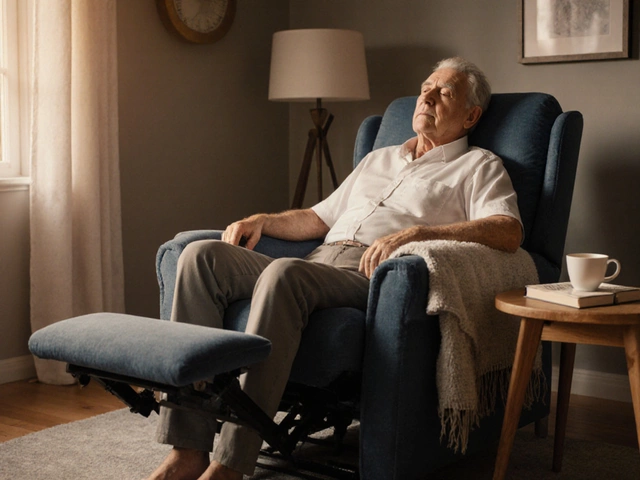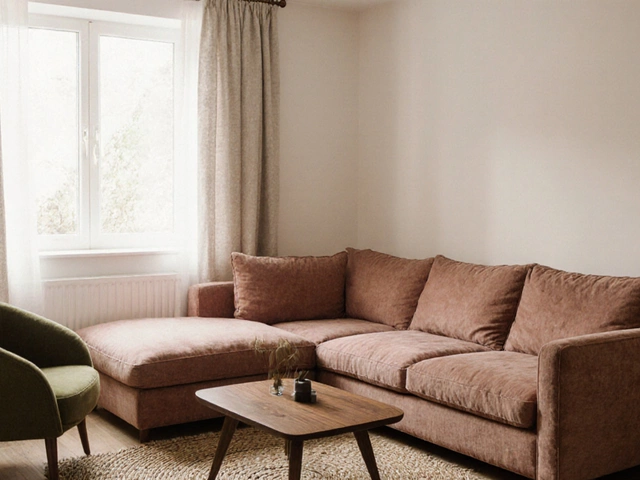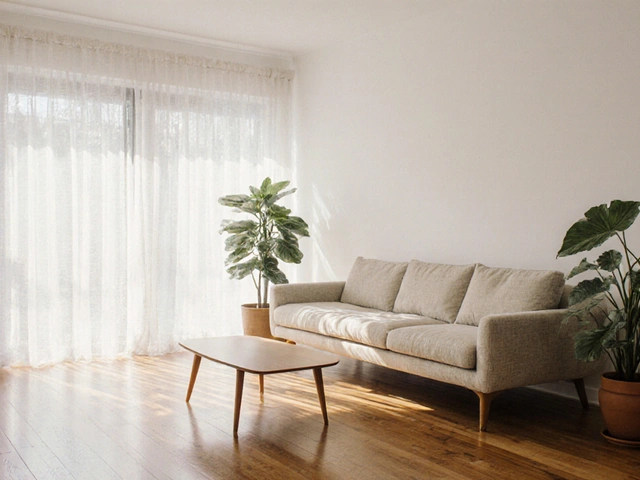The way we position our televisions can significantly affect both our viewing enjoyment and the ambiance of our living spaces. Whether to wall-mount a TV or place it on a stand is a common dilemma for many households today. Each option offers unique benefits and challenges, which can influence everything from the room's design aesthetics to practical issues like cable management.
Mounting a TV on a wall is often praised for its space-saving capabilities and modern look, creating a sleek and minimalist space that highlights not just the screen, but also the room itself. On the other hand, TV stands can offer a more traditional setup, offering flexibility and easy adaptability to viewing habits. Stands are often more accessible for adjustments and maintenance.
Whichever you choose, considering factors like room layout, family safety, and future tech needs will guide you in setting up the perfect home entertainment system. Dive into this article to discover the pros and cons of each setup and gather useful tips to make the best decision for your space.
- Introduction to TV Placement
- Benefits of Wall Mounting
- Advantages of Using a TV Stand
- Room Considerations
- Safety and Installation Tips
- Final Thoughts on TV Placement
Introduction to TV Placement
Television has evolved from a luxury item to an essential part of our daily lives, a companion during dinner and a gateway to worldwide events. As TVs have grown thinner, smarter, and more versatile, the question of how to best integrate them into our living spaces has taken on new dimensions. The choice between mounting a TV on the wall or placing it securely on a stand is not merely about aesthetics—it touches on acoustics, comfort, and even safety. With the advent of flat-screen technology, mounting a TV has become a popular choice, creating a cinema-at-home feeling while freeing up space. But placing it on a TV stand setup remains a tried-and-true option for many, offering flexibility and personality to a room's decor.
Determining the optimal TV placement is far more nuanced than it might initially appear. Not only does it involve architectural considerations—like the size and layout of your room—but also personal habits that dictate viewing distance and angle. According to a survey by the Consumer Electronics Association, a staggering 57% of respondents noted the difficulty in deciding between wall mounts and stands, a decision often influenced by factors such as room proportion, light exposure, and even the types of media devices in use. "Placement is instrumental—like tuning a musical instrument," suggests renowned interior designer Jonathan Adler, highlighting how thoughtful TV positioning harmonizes a room's function and flow.
While wall-mounted TVs present a clean, modern alignment that maximizes floor space, they can sometimes pose challenges—particularly if the wall in question is difficult to drill into or if there are limitations related to cable management. Conversely, a TV stand setup might take up more room but offers a breadth of styles, storage solutions, and ease of access that shouldn't be underestimated. In some cases, a stand is simply what best matches the room's aesthetic, enabling you to complement the TV with decorative items or storage units. For those who love rearranging their space, stands allow versatility without re-drilling holes every time you wish to change your room's layout.
Benefits of Wall Mounting
Mounting your TV on a wall is an increasingly popular choice among tech-savvy households, driven by both practical and aesthetic reasons. First and foremost, a wall-mounted TV can free up precious floor space, making it particularly advantageous in compact living spaces where every inch counts. This not only opens up the room but also contributes to a more streamlined, modern look. By elevating the TV, you are able to eliminate the need for bulky furniture and allow other decorative elements of your room to shine. Many interior designers advocate for using wall mounts because they can help create a focal point in the room, drawing attention without overpowering the space.
Another significant advantage lies in the versatility of viewing angles. With a TV wall mount, you have the capability to adjust the height and tilt, helping you find the perfect line of sight that's easy on your neck and eyes. This is particularly beneficial in multipurpose rooms, where people may be watching from different parts of the room. A well-placed TV mount ensures that even the back-row spectators have a good view. More adjustable models allow flexibility, so you can pivot the screen towards the kitchen during dinner prep or align perfectly while lounging on the couch for movie night.
“TV wall mounting has become an aesthetic preference for those seeking a modern and minimalist style. It not only adds elegance to the room but allows greater flexibility in space utilization.” — Interior Designer Magazine
Beyond aesthetics and viewing comfort, wall-mounted TVs can also improve safety, an often-overlooked aspect. Especially in households with children or pets, having a TV secured high on the wall reduces the possibility of accidental knocks, pulls, or topples. This more secure setup means peace of mind for parents and pet owners alike. Additionally, advanced wiring solutions make it possible to conceal cords and cables neatly behind the wall, eliminating potential trip hazards and reducing visual clutter. This approach results in a neat, professional look that adds to your home's overall appeal.
Technical Considerations
The choice of a wall mount can influence the installation process significantly. While some might shy away from installation over fears of damaging their walls, modern mounts are designed for a simpler, more intuitive setup. Lightweight bracket systems make it easy for even DIY enthusiasts to install a TV wall mount successfully with a few tools. Many mounts come with comprehensive manuals that guide you through the process, ensuring that you achieve a secure fit.
Interestingly, data from industry studies suggests that customers who mount their TVs often experience longer device lifespans, attributed to better heat distribution on an exposed wall. This can be particularly relevant for homes using modern, super-thin TVs that are sensitive to excessive heat. If properly installed, a wall mount offers stability that can help protect your TV against the vibrations and movements that can occur during regular household activity.
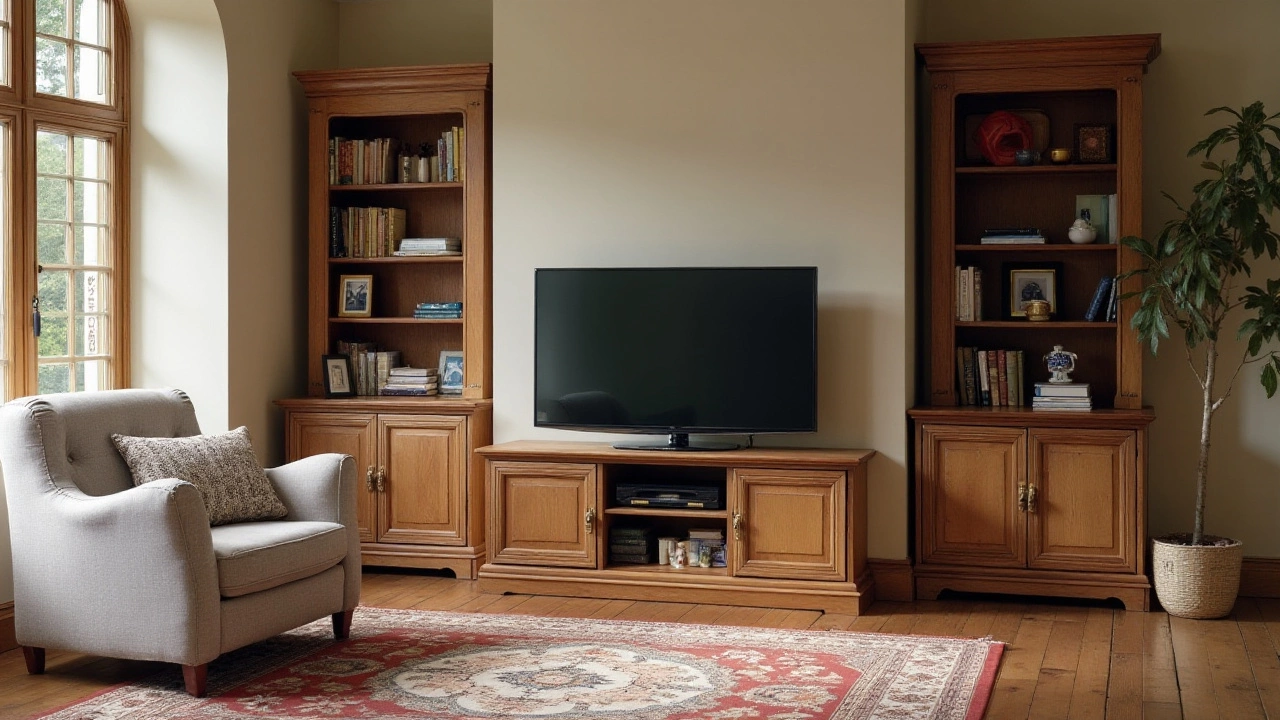
Advantages of Using a TV Stand
When considering the best way to display a television, opting for a TV stand setup presents several appealing advantages. One of the most prominent benefits is flexibility. Unlike their wall-mounted counterparts, TV stands permit easy repositioning, making it simple to rearrange your living space in response to changing moods or needs. This freedom can be especially advantageous in multipurpose rooms, where space configuration is often adjusted for various activities, from watching movies to hosting gatherings.
TV stands are also inherently practical, offering not only a sturdy base for your TV but also additional storage space. Many stands come equipped with shelves, drawers, or cabinets that can house a plethora of electronic devices, media collections, and gaming accessories. This integration of storage helps alleviate clutter in your living area, keeping the room streamlined and organized. Moreover, TV stands can act as a visual anchor in a room, tying together decor elements and adding a touch of personal style with their diverse range of designs and finishes.
Accessibility is another key advantage of the TV stand option. For those who frequently upgrade their equipment or simply prefer hassle-free access, TV stands provide the convenience of reaching cables and ports without the need to dismantle wall fixtures. This ease of access can be critical for tech enthusiasts who often adjust or replace their gadgets. Notably, a study by a leading consumer electronics magazine reported that 67% of tech-savvy individuals prefer TV stand setup for its user-friendly maintenance aspect.
"TV stands offer the kind of unpretentious simplicity that makes home entertainment enjoyable again," says electronics expert James Cortez.
Aesthetically, TV stands contribute to the room's overall design scheme, unlike wall-mounted TVs which can sometimes present a too-modern appearance in traditionally decorated homes. With numerous styles available, from sleek and modern to elegant and vintage, a TV stand allows homeowners to find a piece that complements their particular taste and blends seamlessly with existing furnishings. This versatility in style also adds the option to choose between open stands that accentuate airy space or closed stands that hide electronics, depending on the desired look and function.
In terms of safety, TV stands eliminate the potential risks associated with wall-mounting, where improper installation could lead to disaster. With a sturdy and well-constructed TV stand, the risk of the television falling is considerably reduced, provided the stand is set on a stable surface. Moreover, in households with small children or pets, a stand might be a safer choice, minimizing hazards of TV tipping that could arise from inadequate wall bracketing or poor structural support.
Ultimately, the benefits of using a TV stand are manifold, combining functional utility with design flexibility. By considering these aspects, homeowners can make informed decisions that enhance both their viewing experience and the overall harmony of their living spaces. Whether for the versatility, style, or the practicalities it offers, a TV stand can be an excellent choice for many looking to elevate their home entertainment setup.
Room Considerations
When deciding between wall-mounting your TV or opting for a stand, the dimensions and layout of your room are pivotal factors. A spacious room might easily accommodate a stand, adding an element of classic charm, while a snug urban apartment benefits from the sleek look of a wall-mounted TV. The placement must harmonize with room furnishings and the natural flow of movement within the space. A wide-open living area lets you creatively space out nearby furniture, like the couch or seats, to ensure everyone's got the ideal viewing angle. Alternatively, a cozy room benefits from a wall-mounted TV above a fireplace or central wall to maintain the openness and reduce clutter.
Ceiling height is also pivotal. Lower ceilings demand careful planning, as mounting a TV too high can strain viewers' necks, decreasing enjoyment. An ideal height aligns the center of the screen with your sightline when seated. Meanwhile, a TV stand provides flexibility, as it can vary in height to fit your comfort level—a critical aspect, particularly in multi-purpose settings. Think of a living room that doubles as a study; stands offer versatility to shift your TV, aiding in multi-use functionality without the permanence of wall mounts.
Safety should never be taken lightly, especially in homes with young children or pets. Wall mounts offer security, keeping delicate electronics out of reach, whereas TV stands require additional safety measures like securing the TV to the wall and ensuring stability on uneven floors. In rooms frequented by children, minimizing risks associated with pulling or tipping involves careful selections. "A well-secured TV setup can prevent thousands of injuries," highlights Consumer Reports. It's essential to tailor the setup based on probable in-room activities, whether that means toddler playtime or a peaceful movie night with your pets.
Lighting is another primary consideration, as glare drastically impacts viewing quality. Large windows or bright lights bouncing off the screen can be remedied by smart planning. Assess the sunlight's path and then choose a mount or stand placement accordingly, perhaps incorporating curtains or adjustable blinds to enhance the experience. The adaptability of modern TV stands with pivoting shelves also comes in handy here, allowing easy movement to dodge pesky glares. Those tiny touches, like choosing a matte TV finish or a mount that offers swivel capabilities, further augment your visual pleasure.
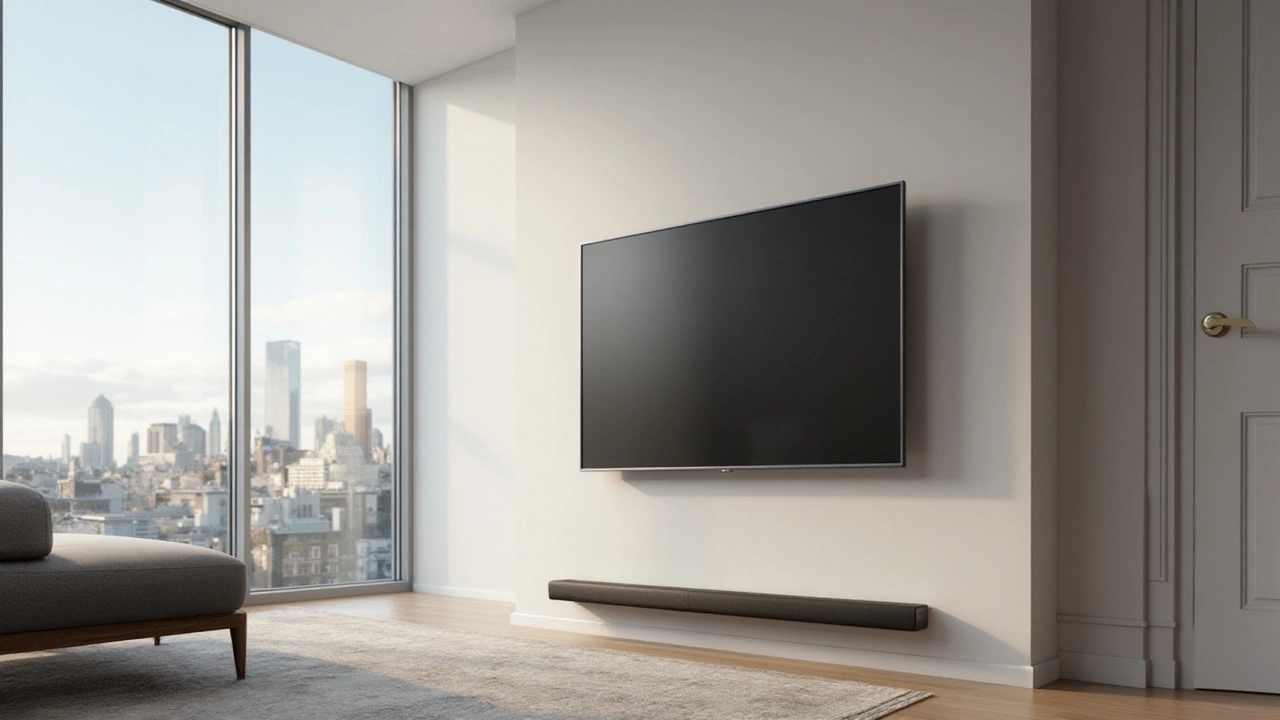
Safety and Installation Tips
When deciding on the perfect TV setup, considering the safety of your space is crucial. Whether you opt for a TV wall mount or a stand, ensuring proper installation can prevent accidents and prolong the life of your equipment. A securely mounted television not only enhances the aesthetic appeal of your living room but also protects your investment from potential damage. Experts recommend mounting TVs at eye level for natural viewing, which averts neck strain and improves the overall watching experience.
To properly anchor a TV onto the wall, it’s necessary to first identify the right wall space – ideally, a sturdy interior wall with wooden studs. Using a stud finder, locate the studs to provide the necessary support, minimizing risks like the TV tipping over. For those using a drywall anchor, choose only high-quality toggles or molly bolts to support the weight. Meanwhile, ensure that cables do not dangle or become entangled, which can be solved by using cable management covers that blend into the wall color.
For families with children, a sturdy TV stand setup could be preferable, as the television is less likely to fall if bumped. Opt for stands with wide bases and consider securing the TV with straps if it sits at a height accessible to children. Moreover, the placement of the stand can heavily impact the acoustics and viewing angle. It's advisable to place the stand where ambient light from windows won't cause glare on the screen, ensuring that the sound system is optimally positioned for best audio performance.
“Most accidents related to TV setups stem from improper installations or usage of uneven surfaces,” confirms Johanna Glenn, safety consultant from SafeHome.
Ensuring the mount or stand is firm can greatly reduce the instances of accidental falls.Regularly check the stability of your setup to catch any loosened screws or leaning issues early. By taking these steps, you'll create a secure, enjoyable entertainment environment for everyone in the home.
When you are assembling a TV stand, follow the manufacturer's instructions carefully. Generally, you will start by sorting through all screws, bolts, and tools required for assembly. Laying out all components before starting the process provides clarity. Follow a systematic approach, attaching legs or cabinets fully before attempting to secure the heavier components. It is often helpful to have a second person assist, especially at points where alignment might be crucial.
For those curious about weight limits, here’s a quick reference guide that can assist when picking the right mount or stand:
| TV Size (inches) | Recommended Weight Limit (pounds) |
|---|---|
| 32-40 | 50-70 |
| 42-50 | 70-110 |
| 52-60 | 110-150 |
Utilizing these practical home entertainment setup tips will ensure not just safety, but also a longer lifespan and better performance of your precious equipment.
Final Thoughts on TV Placement
Deciding whether to wall-mount your TV or to rest it on a TV stand is a decision that marries practicality with aesthetics, transforming both the function and feel of your living space. Wall-mounting a TV often conjures images of sleek minimalism, with cables disappearing seamlessly into well-orchestrated conduits. It's the picture of modern elegance—a perfect fit for rooms with limited floor space or contemporary, open-plan designs. Mounting a TV can also protect it from accidental knocks and spills, a critical consideration for homes with children or pets. However, this option isn't entirely without its drawbacks. In fact, adjusting your TV once mounted requires additional tools and patience. And while technology has gifted us with increasingly lightweight screens, securing the mount into a suitable wall stud remains non-negotiable for safety.
The less permanent choice of a TV stand presents its own set of advantages—chief among them, versatility and ease. There’s an undeniable convenience to adjusting your TV’s position or angle with ease, not to mention the additional storage and design benefits a TV stand might bring. For those who are in rental properties, or who prefer changes frequently, a stand offers flexibility that mounts cannot. Yet, safety needs to be a priority here, too. Ensuring that your stand is sturdy enough to hold the television, and perhaps strapping the TV down to the stand itself, can prevent accidentally tipping the whole thing over. It’s also crucial to consider the visual balance of your room, as the bulkier the stand, the more it needs to blend with your existing furniture.
When you consider choosing between a TV wall mount and a stand, it's essential to weigh these factors carefully and envision your home space as you hope it to be. Both alternatives can be accessorized and optimized to complement your lifestyle beautifully. According to the Consumer Electronics Association, approximately 70% of consumers consider how the installation will fit into their home's design as a critical consideration. This is no minor point; a well-integrated setup can enhance your home and your enjoyment tenfold. Indeed, the decision goes beyond the physical placement of your TV; it's about creating an environment that maximizes comfort and coherence. As Rod Martin, an expert in home entertainment systems, notes,
"A great viewing experience transcends the screen alone—it’s about how your whole room feels, interacts, and complements the technology."Whether you choose wall-mounting or a stand, make sure it aligns with your visual and practical preferences, creating a space you and your family will love for years to come.

